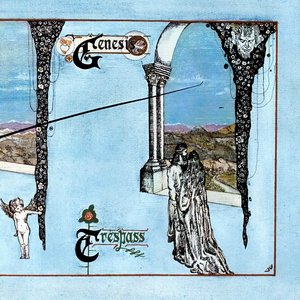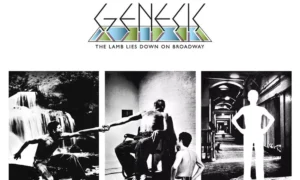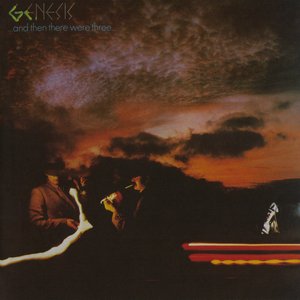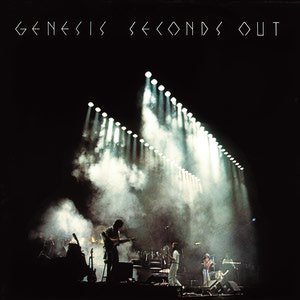Genesis stands as one of the most transformative and enduring bands in rock history, carving a legacy that spans over five decades. Emerging in the late 1960s as a group of school friends with a penchant for storytelling and orchestral arrangements, the band quickly evolved into pioneers of progressive rock. Their early music wove together complex instrumentation, poetic lyrics, and theatrical performances, capturing imaginations with grand epics like “Supper’s Ready” and the conceptual masterpiece The Lamb Lies Down on Broadway.
As the years went on, Genesis underwent profound shifts—both in their lineup and their sound. The departure of frontman Peter Gabriel in 1975 marked a turning point, with drummer Phil Collins stepping into the spotlight as lead vocalist. This change sparked a gradual transformation from elaborate prog suites to a more streamlined and accessible style, culminating in chart-dominating pop-rock anthems like “Invisible Touch” and “Land of Confusion.”
Studio Albums
From Genesis to Revelation (1969)

Genesis’s debut album presents a young band finding its footing. Produced by Jonathan King, who encouraged them to craft gentle, melodic songs, the album combines baroque pop with light orchestration. Tracks like “The Silent Sun” and “In the Wilderness” showcase a budding talent for atmosphere and storytelling, but the project was hampered by its concept: a loosely biblical theme intended to unify the songs. Its title confused listeners, many of whom mistook it for a religious album, and the lack of live performances limited its impact. While it failed commercially, From Genesis to Revelation served as an essential starting point, laying the groundwork for the band’s more ambitious future.
Trespass (1970)

Marking a significant shift in style, Trespass finds Genesis exploring progressive rock for the first time. Songs like “The Knife,” with its fiery energy and political overtones, reveal a band pushing beyond the pastoral sound of their debut. Tony Banks’s intricate keyboard work and Anthony Phillips’s acoustic guitar dominate the album’s sonic palette, creating a dreamy yet dramatic atmosphere. While not a commercial success, Trespass hinted at the band’s potential. However, Phillips’s departure due to stage fright and disagreements about touring left the band at a crossroads, leading to the addition of Phil Collins and Steve Hackett in the next phase.
Nursery Cryme (1971)

With the arrival of Collins and Hackett, Genesis began to solidify their identity as progressive rock innovators. Nursery Cryme blends macabre storytelling with intricate compositions, epitomized by “The Musical Box,” a haunting tale of love, violence, and reincarnation. “The Return of the Giant Hogweed” and “Seven Stones” showcase Hackett’s innovative guitar work and Collins’s fluid drumming, both of which would become cornerstones of the band’s sound. While not an immediate success, Nursery Cryme built their cult following, particularly in Europe, and set the stage for their artistic breakthrough.
Foxtrot (1972)

Foxtrot is a high watermark of progressive rock and a defining moment for Genesis. The album opens with the dramatic “Watcher of the Skies,” featuring Tony Banks’s Mellotron intro, and closes with the monumental “Supper’s Ready,” a 23-minute suite blending spiritual allegory with surreal imagery. The album showcases the band’s growing confidence and collaborative chemistry, with Hackett and Collins integrating seamlessly into the group’s intricate compositions. Foxtrot received critical acclaim and brought Genesis wider recognition, solidifying their position as one of prog rock’s leading acts.
Selling England by the Pound (1973)

Often regarded as Genesis’s masterpiece, Selling England by the Pound captures the band at their creative zenith. The album marries quintessentially English themes with virtuosic musicianship, as heard in “Dancing with the Moonlit Knight” and the iconic “Firth of Fifth,” which features one of Steve Hackett’s most celebrated guitar solos. “I Know What I Like (In Your Wardrobe)” gave the band their first charting single, while tracks like “The Cinema Show” showcase their ability to blend lyrical depth with intricate instrumental passages. The album’s cultural resonance and musical brilliance make it a cornerstone of the progressive rock genre.
The Lamb Lies Down on Broadway (1974)

This double concept album represents Genesis’s most ambitious work. Written primarily by Peter Gabriel, The Lamb Lies Down on Broadway tells the surreal and symbolic story of Rael, a Puerto Rican youth navigating a dreamlike New York City. Musically, it balances atmospheric tracks like “Fly on a Windshield” with experimental pieces like “The Waiting Room.” While critically acclaimed, the album’s complexity and Gabriel’s dominance during its creation led to tensions within the band. Gabriel departed shortly after its release, making this album both a high point and the end of an era.
A Trick of the Tail (1976)

After Peter Gabriel’s departure, Genesis faced the challenge of continuing without their charismatic frontman. With Phil Collins stepping into the role of lead vocalist, A Trick of the Tail proved the band’s resilience and ability to thrive. Songs like “Ripples” and the title track retain the band’s progressive sensibilities, while tracks like “Squonk” highlight Collins’s vocal warmth. The album was a critical and commercial success, dispelling doubts about the band’s future and establishing Collins as a capable frontman.
Wind & Wuthering (1977)

A more atmospheric and introspective album, Wind & Wuthering reflects a band honing their lyrical and musical depth. Tracks like “Blood on the Rooftops,” with its poignant social commentary, and “Afterglow,” a sweeping ballad, stand out as highlights. The instrumental suite “Unquiet Slumbers for the Sleepers…In That Quiet Earth” showcases the band’s technical skill. However, Steve Hackett’s frustration with his limited creative input led to his departure after the album’s release, marking the end of Genesis’s classic prog lineup.
…And Then There Were Three… (1978)

With Hackett gone, Genesis was reduced to a trio, and their sound shifted toward a more streamlined approach. The album’s standout track, “Follow You Follow Me,” marked their first major pop hit and signaled a new direction for the band. While tracks like “The Lady Lies” retain a touch of their prog roots, the album overall reflects the trio’s desire to adapt to changing musical trends.
Duke (1980)

Duke bridges the gap between Genesis’s progressive past and their growing pop sensibilities. Tracks like “Duchess” and “Behind the Lines” explore grand, thematic narratives, while “Misunderstanding” and “Turn It On Again” showcase their knack for catchy, accessible songwriting. The album’s blend of styles made it a commercial success, cementing the trio’s identity in the new decade.
Abacab (1981)

A bold reinvention, Abacab saw Genesis embracing a more stripped-down, modern sound. Tracks like “No Reply at All,” with its punchy horn section, and “Man on the Corner,” with its minimalist approach, exemplify their willingness to experiment. While polarizing for some longtime fans, Abacab expanded their audience and marked the band’s full entry into the mainstream.
Genesis (1983)

Often referred to as the “Shapes” album, Genesis balances darker themes with radio-friendly hits. Tracks like “Mama,” with its haunting atmosphere, and “That’s All,” a straightforward pop tune, showcase the band’s versatility. Meanwhile, the two-part “Home by the Sea” offers a nod to their progressive roots. The album was another commercial triumph, solidifying their 1980s dominance.
Invisible Touch (1986)

Genesis’s most commercially successful album, Invisible Touch, propelled them to global superstardom. Featuring five Top 5 singles in the U.S., including the title track and “Land of Confusion,” the album embraced a polished, pop-oriented sound. Tracks like “Tonight, Tonight, Tonight” retain a touch of their prog complexity, but the album is primarily a celebration of accessible, radio-friendly music.
We Can’t Dance (1991)

After a five-year hiatus, We Can’t Dance marked Genesis’s return with a mix of pop anthems and expansive compositions. Tracks like “No Son of Mine” and “I Can’t Dance” became radio staples, while longer pieces like “Driving the Last Spike” and “Fading Lights” showcased their narrative and instrumental depth. It was the final album with Phil Collins as lead vocalist.
Calling All Stations (1997)

The first (and only) album with Ray Wilson as lead singer, Calling All Stations attempted to blend Genesis’s progressive roots with a darker, modern rock sound. While tracks like “Congo” and “Shipwrecked” had moments of promise, the album struggled to connect with fans and critics. Its lukewarm reception led to the band’s extended hiatus, effectively marking the end of Genesis as a recording entity.
The B-Sides – Hidden Treasures of Genesis
Genesis’ B-sides and rarities are a treasure trove for fans eager to uncover the lesser-heard corners of their expansive catalog. These tracks, often overlooked in the shadow of their main releases, provide fascinating insights into the band’s creative evolution, offering a mix of experimentation, narrative flair, and glimpses of their artistic journey.
Rare and Unreleased Tracks from the Early Days
In the early years of Genesis, when their sound was still taking shape, a number of rare and unreleased tracks captured the raw potential of a band on the cusp of greatness. Songs like “Twilight Alehouse” and “Shepherd” (a highlight of their BBC Sessions) showcase their formative blend of folk-rock and ambitious storytelling.
“Twilight Alehouse” became a fan favorite for its brooding atmosphere and lyrical exploration of isolation, themes that would later surface in their progressive epics. “Shepherd,” meanwhile, hints at the pastoral imagery and melodic sensibilities that would become hallmarks of their early prog era. These tracks stand as a testament to their willingness to experiment, even in their nascent stages, and have earned enduring affection among dedicated listeners.
1970s B-Sides
During their golden age of progressive rock in the 1970s, Genesis crafted a number of compelling B-sides that, for one reason or another, didn’t make it onto their main albums. “Happy the Man” is a whimsical, lighthearted piece that contrasts sharply with the weighty themes of their albums, showcasing the band’s playful side. “Match of the Day” is another notable example, capturing a cheeky, football-themed narrative in a period where their music leaned toward the cerebral and theatrical.
Other tracks from this era, often excluded due to thematic misalignment or album length constraints, offer a fascinating look at their evolving style. These songs enrich their catalog by demonstrating that even their “cast-offs” carried a distinct creative spark, often blending humor, experimentation, and musical intricacy.
1980s and 1990s B-Sides
As Genesis moved into their pop-rock era, their B-sides became a platform for experimentation outside the polished confines of their main albums. Tracks like “Do the Neurotic” and “Submarine” highlight their continued flair for instrumental complexity, even in an era more associated with chart-friendly hits. “Feeding the Fire,” meanwhile, recalls the emotive storytelling of their earlier days, combining a soaring melody with thought-provoking lyrics.
These tracks reveal the band’s ability to balance their pop success with creative ambition, offering die-hard fans a deeper connection to their evolving sound. While not as widely recognized as their hits, these songs hold a special place in the hearts of those who appreciate Genesis’ full range of artistic expression.
Archival and Box Set Inclusions
In the years following their peak, Genesis released a series of archival collections that unearthed live recordings, demos, and previously unavailable material. Genesis Archive 1967–1975 brought to light rare gems from their progressive era, including alternate takes and live renditions that captured the energy of their theatrical performances. Similarly, Genesis Archive 2: 1976–1992 focused on the Collins-led years, providing fans with deeper insight into this period through live tracks and studio outtakes.
Expanded reissues of their albums further enriched the Genesis story, presenting remastered versions alongside B-sides and demos that had long been inaccessible. These collections not only satisfied collectors but also introduced new listeners to the hidden layers of Genesis’ artistry, ensuring their legacy remains as dynamic and expansive as their music.
Live Albums and Performances

Genesis’ reputation as a live band is legendary, and their live recordings provide a vivid snapshot of their musicianship and the evolution of their sound over the decades.
Genesis Live (1973): Their first live album, recorded during the Foxtrot tour, showcases the band in their progressive rock prime. Tracks like “The Knife” bristle with intensity, while Peter Gabriel’s theatrical storytelling and charismatic stage presence bring their intricate compositions to life.
Seconds Out (1977): Widely regarded as one of the greatest live albums in rock history, Seconds Out documents the final performances of guitarist Steve Hackett with the band. The album captures their transition to a more streamlined sound, with Collins confidently stepping into his role as lead vocalist.
Three Sides Live (1982): A mix of live recordings and studio tracks, this release bridges their progressive and pop-rock eras. Featuring performances of songs like “Turn It On Again” and “Abacab,” it highlights their versatility and growing stadium appeal.
The Way We Walk (1992): Split into two volumes—The Shorts and The Longs—these albums reflect Genesis’ dual identity as pop hitmakers and progressive rock innovators. They also capture the polished, larger-than-life performances of their late-era tours.
Live Over Europe 2007: This release chronicles their triumphant reunion tour, showcasing a setlist that spans their entire career. The album captures the band’s enduring chemistry and ability to connect with fans, even decades after their formation.
Closing Thoughts
Genesis stands as a band that redefined what it means to evolve in the ever-changing landscape of rock music. From their early days as architects of intricate, theatrical progressive rock to their later dominance of the pop charts, their career is a testament to innovation, adaptability, and unparalleled musicianship. Albums like Selling England by the Pound and Invisible Touch represent two ends of a spectrum, but both showcase the band’s ability to craft music that resonates deeply with listeners.
Beyond their celebrated studio releases lies a world of hidden treasures. Their B-sides, rare tracks, and live recordings reveal the depth of their artistry, offering fans a chance to discover new dimensions of Genesis’ music. Tracks like “Twilight Alehouse” and live renditions of “The Lamb Lies Down on Broadway” showcase moments of brilliance that might otherwise remain in the shadows, enriching the band’s legacy for those willing to dig deeper.
Genesis’ impact is not merely confined to their extensive catalog but also to the countless artists they’ve inspired and the fans they continue to captivate. Whether you’re a longtime admirer or a newcomer to their music, there’s always something more to uncover in their journey. Revisit their iconic albums, explore their rare gems, and immerse yourself in the live performances that bring their music to life. To truly understand Genesis is to embrace their entire story—a story that continues to shine as one of rock’s most extraordinary legacies.
